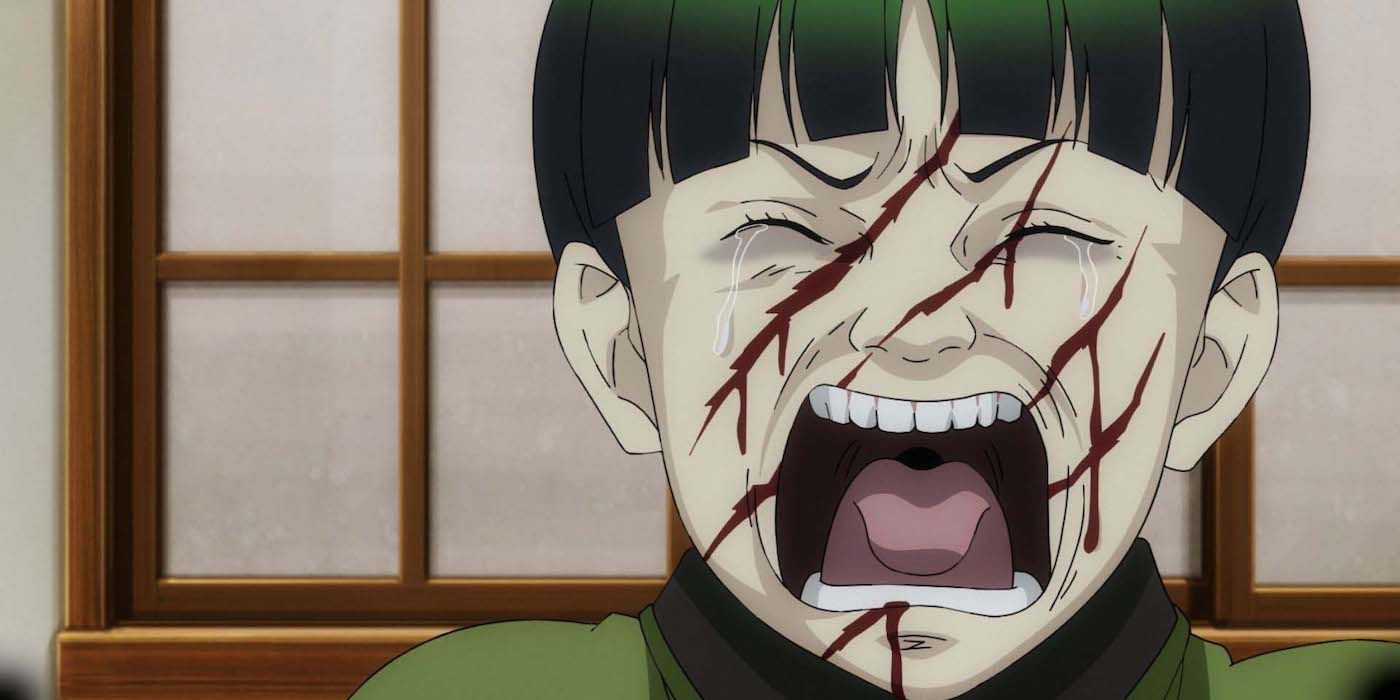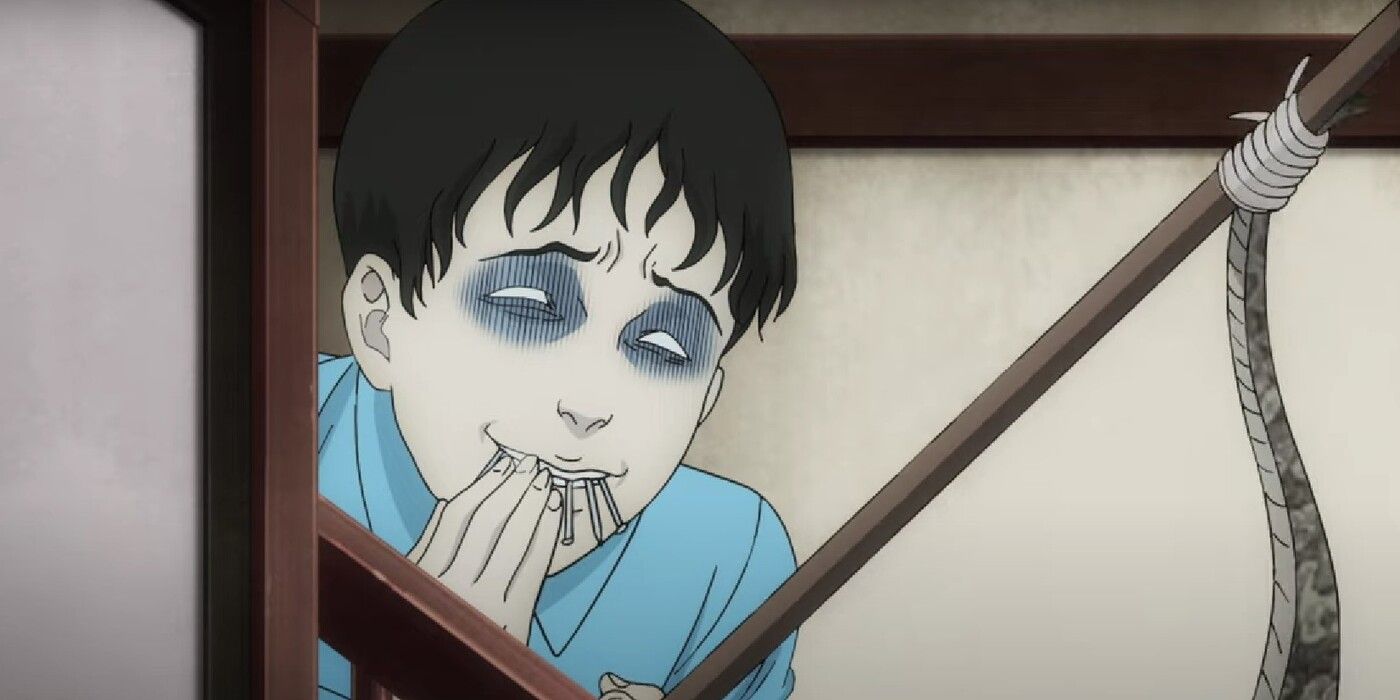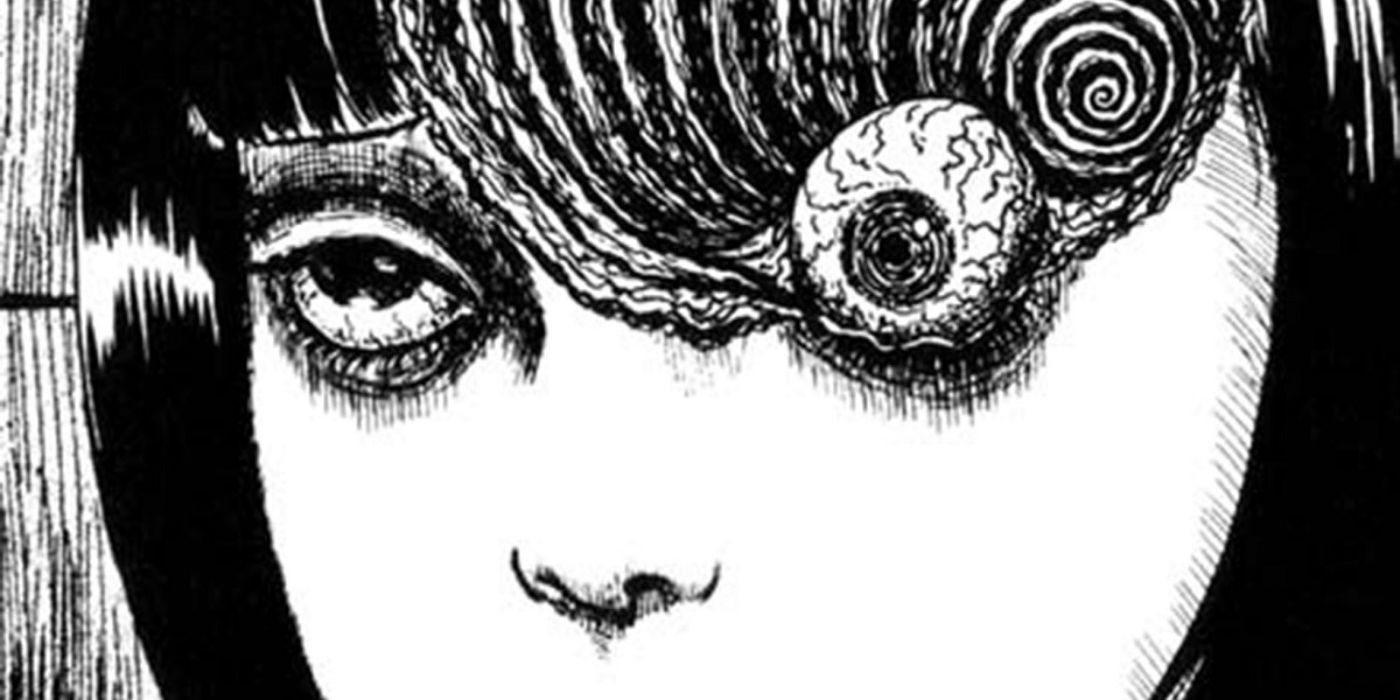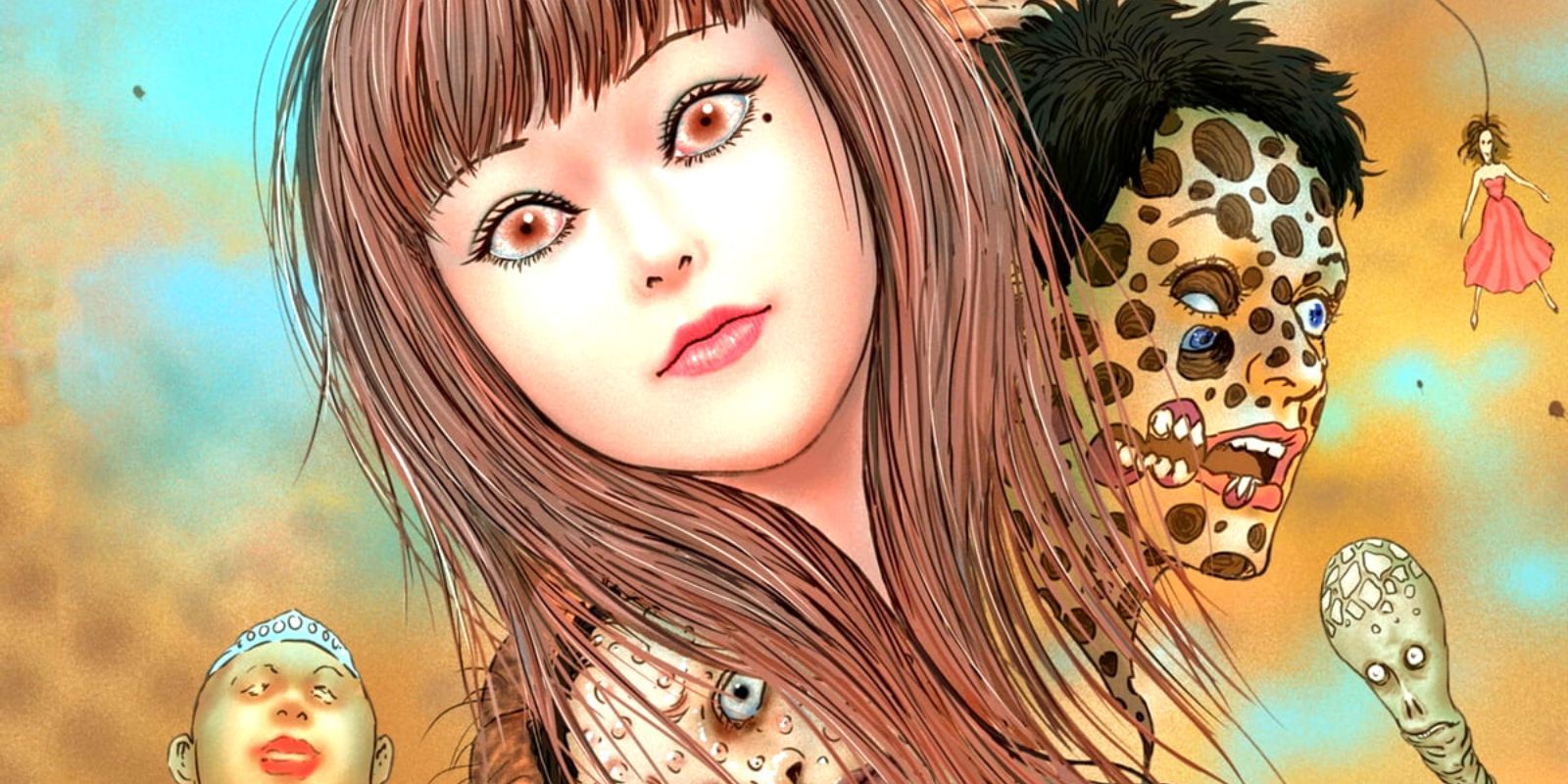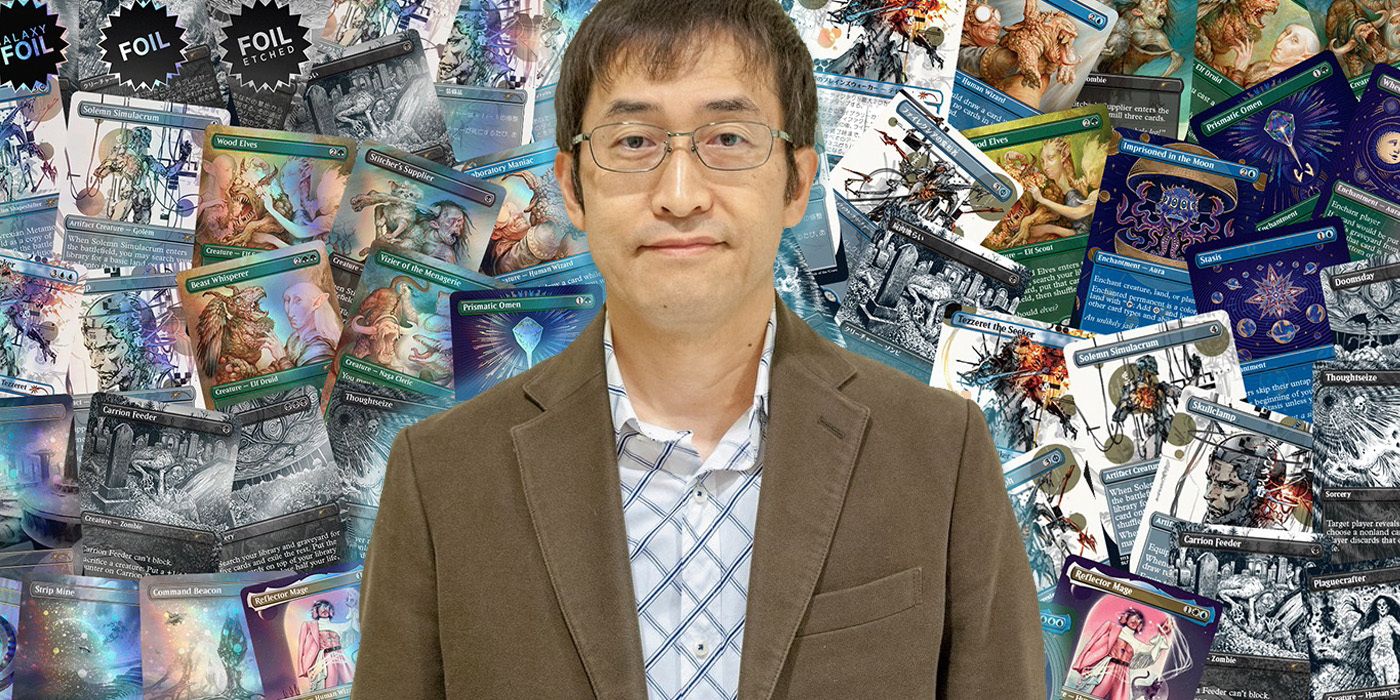When it comes to masters of horror, Junji Ito is right up there with the likes of Stephen King and Guillermo del Toro. The 59-year-old’s forte lies in writing and illustrating some of the most diabolical, terrifying manga stories to ever come out of Japan. He’s been carving out sinister stories since 1987, beginning with shorts sent in to Monthly Halloween — one of Japan’s premier horror publications.
Since then, Ito has grown leaps and bounds in the manga trade. He’s accumulated a massive volume of work under his belt, with fans dubbing his versatile vision the Ito-Verse. Ito’s macabre universe has had worldwide effects.
The Ito-Verse Is Diverse Horror
Ito started his journey off with his most famous body of work, Tomie. This narrative focused on a beautiful young woman with black hair. However, she had demonic powers akin to that of a succubus. Ito told several stories of her murdering young men — sometimes out of pleasure, others in revenge, and in some cases, as a vigilante. This sums up Ito’s creative style: muddying the waters between hero and villain, playing on the human condition and people’s basic instinct to survive.
In the years that passed, Ito created other iconic characters as well, such as Soichi, a young boy who dabbled in black magic, voodoo dolls, and animal torture. Tales such as The Bully had more of a dramatic, relatable element to them, though, dealing with parents abusing and abandoning kids. In that sense, it wasn’t just about gore but psychological trauma. He diversified all the collections he began racking up as his work grew. That said, Ito specialized in body horror, often using humans as vessels for spirits and monsters to possess or emerge out of.
That trope’s been seen in stories such as Den of the Sleeping Demon, where a monster tried to crawl out of an insomniac writer, Yuji. Ito doesn’t mind dealing in other common tropes in Asian literature, though, especially regarding kaiju. His Gyo dealt with deadly creatures such as sharks washing ashore with legs and mankind’s reaction to what they saw as the apocalypse. Clearly, Ito creates from many different perspectives, even going abstract in tales like Uzumaki, where a small town was wrecked by spirals found in people’s hair, in buildings, and in nature. It’s all part of his vision where evil doesn’t need portals or vessels to exist. Sometimes, it just occurs in the very air — an existential theme Ito loves digging into, not caring for the rhyme or reason behind his haunting art.
The Ito-Verse Has Been Adapted For Film and TV
Now, it’d come as no surprise that studios would want the Ito-Verse brought to life. Tomie got adapted into a series of films in the ’90s. Uzumaki would follow suit, as well as other less-heralded projects like Kakashi, which focused on the search for missing people, malevolent spirits, and demonic scarecrows. Then there’s the Junji Ito Collection, a 12-episode anime in 2018 that tried to capture the essence of his most popular stories. Unfortunately, it came under criticism for not adapting the lore properly.
It’s something the visual medium struggles with, whether it be live-action or anime. Even Netflix’s Junji Ito Maniac: Japanese Tales of the Macabre had the same issue. Admittedly, it’s divisive as some loyalists don’t mind changes made, while purists think once it’s the animated format, the Ito-Verse should just be the manga pages come to life. Despite all the contention, however, there’ll always be a demand to see his stories on the big or small screen.
Ito’s vampire portrait, Bloodsucking Darkness, is set to be a film, while Uzumaki has another anime in the works. It leaves fans hopeful they’ll honor the source material. To that point, Ito himself isn’t really a stickler for uniformity and continuity because he doesn’t really confine himself to one world. Ito himself has fought this notion, wanting other creatives to place their stamps and interpretations on his work. His stories happen in various realities with little bleed and overspill, after all, and across various timelines. Seeing as his work’s so loose, Ito doesn’t mind the adaptations taking whatever liberties they see fit to match.
The Ito-Verse Has Made a SDCC 2023 Impact
In an era where manga and anime are as popular in the Americas as ever, Ito has left his seal on SDCC 2023 via the Welcome to the Ito-verse: The Junji Ito Experience interactive display. The showcase had over 100 of the legendary artist’s gorgeously spooky works on tap. Key frames and illustrations from various volumes he shelled out in the last couple of decades were on view. They included most of the aforementioned characters, as well as the likes of Yon & Mu: a self-parody of his family and their two cute cats. Apart from his big properties, there were cult-favorite pieces in the exhibit, too, such as Unendurable Labyrinth.
There, a young lady seeking her missing brother ended up in a tomb filled with mummies. Fans could acquaint themselves with these cerebral art pieces in the interactive session that houses a limited number of patrons at a time. In the process, they got a more intimate, hands-on experience. In addition, Ito had the Horror at the Library: Junji Ito panel and Q&A session. He also partook in the Welcome to the Ito-Verse: Junji Ito panel that detailed his greatest inspirations and influences.
Regarding his universe of cosmic horror, Ito confirmed that celebrity suicides informed his energy on “The Hanging Ballons,” where a lady was haunted by a ballooned version of her own head. He even leaned into other stories from the Shiver collection, such as “Greased.” There, his own battle with acne in his adolescent years drove him to map out a gripping tale of a father killing his zit-laden son and feeding him to patrons at his restaurant. It sums up how, even before he began the industry, Ito was processing the building blocks for his career and drawing creativity from everything around him.
The Ito-Verse Remains in Full Swing
Ito’s presence at SDCC 2023 is quite fitting as he has made a splash in the comics and gaming industry. Uzumaki was nominated for an Eisner Award in 2003 and 2009. He’d eventually cop an Eisner in 2019 for his manga adaptation of Mary Shelley’s Frankenstein. Ito also claimed Eisners for Remina and Venus in the Blind Spot in 2021. This year, he was nominated for Best Writer/Artist for Black Paradox and The Liminal Zone and the Best U.S. Edition of International Material-Asia for Black Paradox.
The former expands the Ito-Verse by focusing on people who meet for a group suicide, only to discover they may have a higher calling. While the latter deals with a college student dreaming of murder, only to think he’s committing them in real. Unfortunately, while Ito didn’t claim any awards this year, what’s for certain is interest in the eerie Ito-Verse is growing. And no matter what, fans won’t stop lapping up Ito’s streams of consciousness that produce some of the most thought-provoking, squeamish horror tales in both the Western and Eastern hemispheres.
